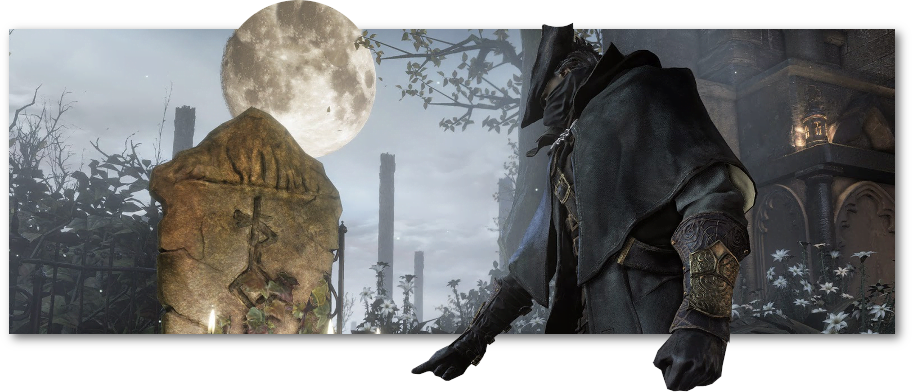Hunter’s Dreams – Defining the Hunt
This is more work on Hunter’s Dream, a 4th Edition D&D-compatible mod made to enable a Bloodborne style of game, where players take on the role of hunters, who have to first research their prey before going out to the tactical combat stage of things where players get to have cool fights with werewolves and whatnot.
Something I really like from Blades in the Dark, something that I am shamelessly trying to bring to Dungeons & Dragons 4th Edition in Hunter’s Dream, is the degree to which players have a sense of agency over the game they’re engaging with.
There’s an existing mindset for D&D that games are basically one of two different kinds of play space. The first is often known as narrativist, where you treat every session, every encounter, as a sequence in a narrative, and so the whole game can be seen as a string of beads. This vision can be sometimes presented as a weakness, where the players are always confined by ‘the story’ that wraps around them like a tunnel. I’m not really here to criticise that, because hey, even the most railroaded game campaign can still be an interesting ghost train.
Then there’s a position, often called ‘simulationist’ which presents the idea that the players are just operating in a world, there’s stuff for them to do, and they can go do stuff at that world, and if it does all relate or connect to things, that’s just because the DM’s job is ‘running the world,’ and any narrative that ensues is emergent. I don’t think this is true either, but some people are fond of talking about it like that.
Neither of these perspectives suit well Blades in the Dark‘s style of player-driven fiction roleplay, and they don’t quite do the job of what I want for Hunter’s Dream. What I want for this is a hybrid model, with a Narrative running as a timer on a simulation, and a large part of that is formalising a system whereby players have direct agency over the tasks in front of them, and the order they handle them.

Now, 4ed is good for this because 4ed D&D is designed to handle a lot of small tactical encounters that are reasonably well-balanced with one another, where the alchemy between monster interactions are less likely to result in catastrophic failures. You’re not likely to find a lot of total dealbreaker combos if you throw enemies together semi-randomly, which means one of the things that it handles really well is generating sequences of small quantities of conflict without necessarily a lot of elaborate construction.
This asks for a robust system for constructing incidents quickly, giving DMs good sources of inspiration, and a clear vision of how they can execute on these encounters interestingly. Now I’m a sucker for this: In 4e, I’m a fan of using the same monster configurations from fight to fight and just changing the terrain around them and watching as players have to formulate different strategies to deal with them.
What I think of in Hunter’s Dream then is that players have a set of different competing needs, they choose what they’re going to go out and hunt, and why. This isn’t to leave players completely adrift, stuffing their characters into a monster pachinko machine – if you’re fighting random monsters of your level, over and over, you’re just going to feel like you’re throwing effort into a bin. What you need then is stuff to structure the kinds of encounters players are after, which I divide into four basic categories: Incidents, Schemes, Needs, and The Doom.
Continue Reading →